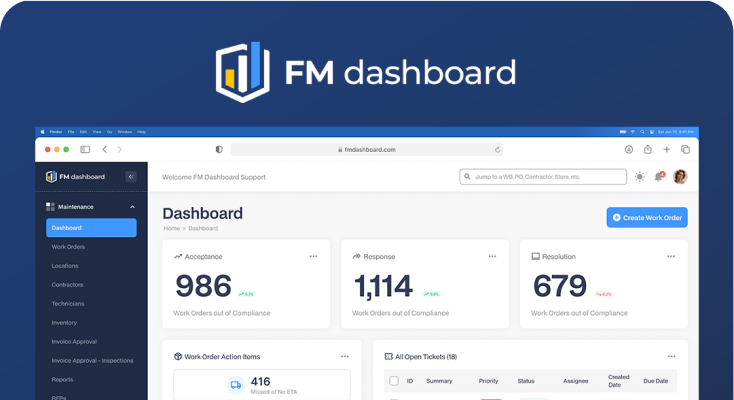How to start asset-based maintenance the easy way.
You’re tired of reacting to unnecessary emergencies. Running your equipment to failure costs you too much money in lost sales, repairs, and replacements. But, you don’t have the time or people to change.
Does this sound like you and your company? You're tired of reacting to unnecessary emergencies. Running your equipment to failure costs you too much money in lost sales, repairs, and replacements. But, you don't have the time or people to change.
The truth is, getting started with asset management is way easier than you're afraid it will be. You just have to pick a place to start.
Here's the fool-proof process.
Set up
Step 1: Pick a group of stores. This can be one store, a district, a region...whatever you are comfortable with. Just make sure it's manageable.
Step 2: Document every asset in each store. It's simple...create a spreadsheet and have your general managers fill it in for you. You can also pay a contractor to do this, but it's less expensive to do it in house.
Step 3: Assign each asset a repair category: Preventive maintenance (PM) or run-to-failure. Our recommendation is to do PM's on critical equipment (if it breaks down it will cost you sales) and classify everything else as run to failure.
Step 4: Write a PM scope of work and schedule for each asset type (i.e., HVAC, refrigeration, fuel equipment, kitchen equipment, etc.) Check with a maintenance trade association like PRSM or RFMA if you need help with this. There is also plenty of information online to help you out.
Step 5: Request pricing for your PM's from your vendors. You will be able to provide them a list of the exact assets they will be servicing, so they should be able to turn pricing around quickly and accurately. This step is not necessary if you have in-house technicians.
Management
Step 1: Schedule your PM's with the winning vendors or your in-house technicians. This is important: fix any problem that is found on your PM's. If the cost of repairs exceeds the replacement cost of the asset, replace it instead. Your goal is to start with a clean slate.
Step 2: Monitor the performance of your assets. If something breaks in between PM's, document that problem and why the problem happened. Ask, "Why?" five times to get to the root issue. If you start to see a pattern, address it. Our customers tell us most of their unnecessary breakdowns come from either neglect or location-level-negligence.
Step 3: Replace or repair anything in the run-to-fail category as needed. As with PM category assets, document the reason for the breakdown.
Note: Your costs will be higher at first because you will be paying to get your equipment back to its ideal operating condition.
Continuation
Once you complete this process once, you will learn that while this takes time to set up, it's not as overwhelming as you feared.
As soon as you have the time and your budget can afford it, repeat this process with a new group of stores (or all of them).
You will notice the amount of reactive work orders decreases over time, and the life of your equipment will increase.
You will also have a better understanding of the issues that lead to unnecessary breakdowns and repair costs.
CMMS
This process is much easier with computerized maintenance management software. Find out how FM Dashboard can help you.
 By
By



